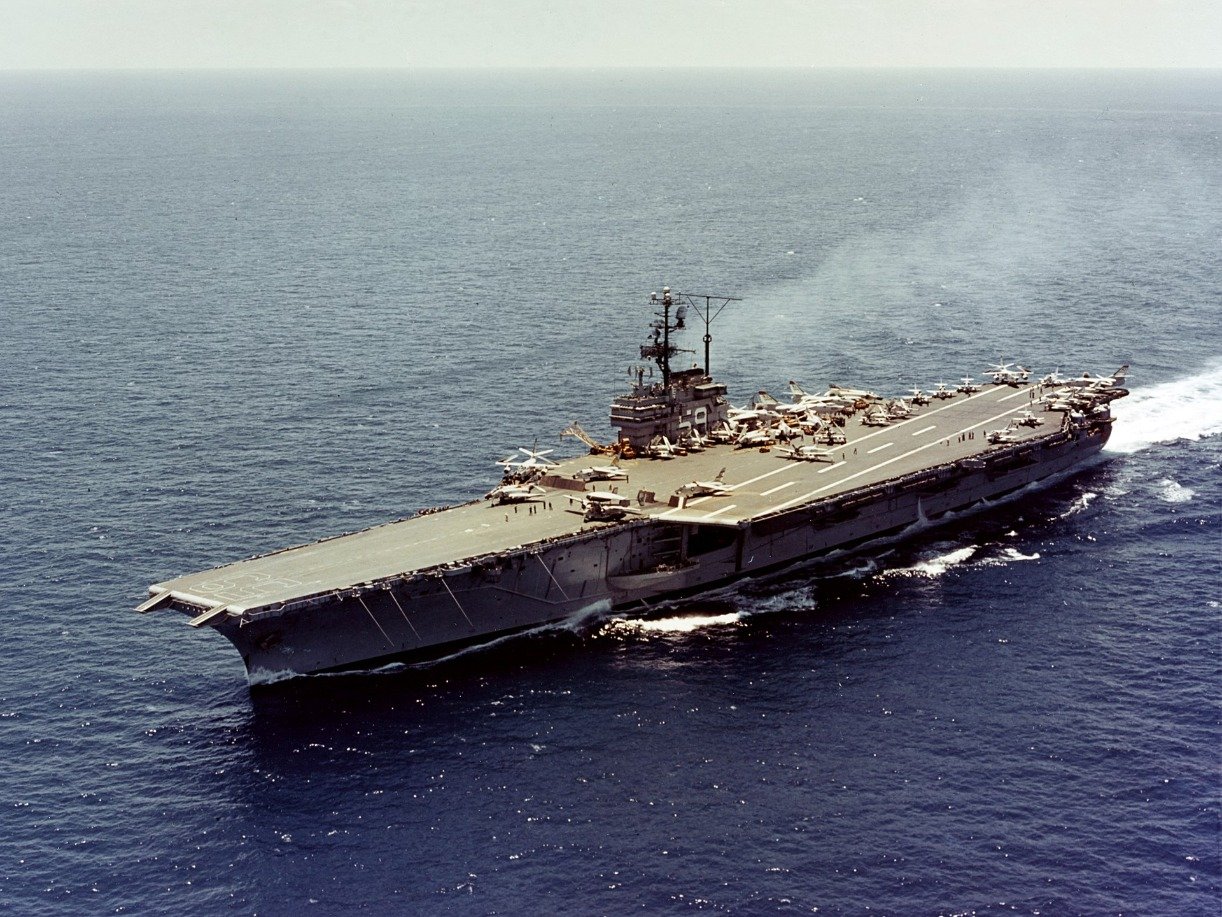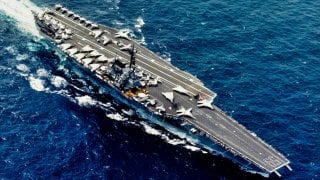The U.S. Navy's Forrestal-Class Aircraft Carriers Were Pure Power
The Forrestal-class "supercarriers" were a product of the Cold War arms race, representing the U.S. Navy's push for advanced naval capabilities.
Summary and Key Points: The Forrestal-class "supercarriers" were a product of the Cold War arms race, representing the U.S. Navy's push for advanced naval capabilities.
-These carriers, including the USS Saratoga, were larger and more capable than their predecessors, the Midway-class.
-Key design improvements included a stronger flight deck, a larger and deeper hull for better stability, and the introduction of an angled deck, allowing simultaneous launch and recovery operations.
-Despite some mishaps, such as collisions and fires, the USS Saratoga served in the Mediterranean and played a role in the Vietnam War before the Forrestal-class was retired in 1998.
Forrestal-Class Supercarriers: Giants of the Cold War Era
During the Cold War, the arms race to develop more advanced and lethal navies was at full force.
From submarines and carriers to airframes and main battle tanks, the U.S. and USSR went head to head to develop cutting-edge technologies like aircraft carriers.
The U.S. Navy’s Forrestal-class “supercarriers” were a product of this effort. The massive ships were named due to their then-extraordinary tonnage.
Comparably, the preceding Midway-class ships were 25% smaller in size. The Forrestal-class remained in service from 1955 to 1998.
The history of the Forrestal-class:
Following the Second World War, airframes were beginning to increase in size. Additionally, the military began conceptualizing that airframes could soon carry smaller nuclear weapons. This combination spearheaded the Navy’s prioritization of air-power capabilities.
While designing the Forrestal-class ships, engineers rectified some of the shortcomings associated with the earlier Midway vessels.
Specifically, the Midway carriers were known for their inability to function properly in rough weather due to their low freeboard and heavy flight deck. To combat this, the Forrestal vessels’ flight decks were the strength deck. Each ship in this class possessed a larger and deeper hull, which allowed for a more stable platform with increased height above the water.
Like earlier U.S. Naval vessels, the Midway ships had a gap between the flight deck and the ship's structure up forward.
Engineers incorporated the addition of a hurricane bow to the Forrestal carriers to enclose the forward part of the ships.

Perhaps the most notable design change included on the Forrestal vessels was the modern angled deck. Developed in the early 1950’s by Royal Navy Captain Dennis Campbell, this layout allowed carriers to conduct launch and recovery operations simultaneously.
As explained by the U.S. Naval Institute:
“The incorporation of an angled deck off to port into the Forrestal design obviated any envisioned need for a flush deck. The landing area was remote and directed away from the starboard side such that a structure there would present no safety issue. As built, the island’s centerline was nearly 95 feet to starboard from that of the ship and even farther from the angled deck. Additionally, the island solved the uptake issues by incorporating them into the structure and radar installations could be readily mounted without hindrance to air operations. A further benefit was that the antenna and radar placement high on the island gained greater electronic efficiency.”
Introducing USS Saratoga:
During her decades in service, USS Saratoga suffered from a few mishaps. In 1960, she collided with a German freighter off the coast of North Carolina. Shortly after, seven on board were killed when a fire broke out in the carrier’s number two machinery space. Despite these setbacks, Saratoga was deployed to the Mediterranean and subsequently participated in the Vietnam War.
About the Author: Maya Carlin
Maya Carlin, National Security Writer with The National Interest, is an analyst with the Center for Security Policy and a former Anna Sobol Levy Fellow at IDC Herzliya in Israel. She has by-lines in many publications, including The National Interest, Jerusalem Post, and Times of Israel. You can follow her on Twitter: @MayaCarlin.
Image Credit: Creative Commons.


